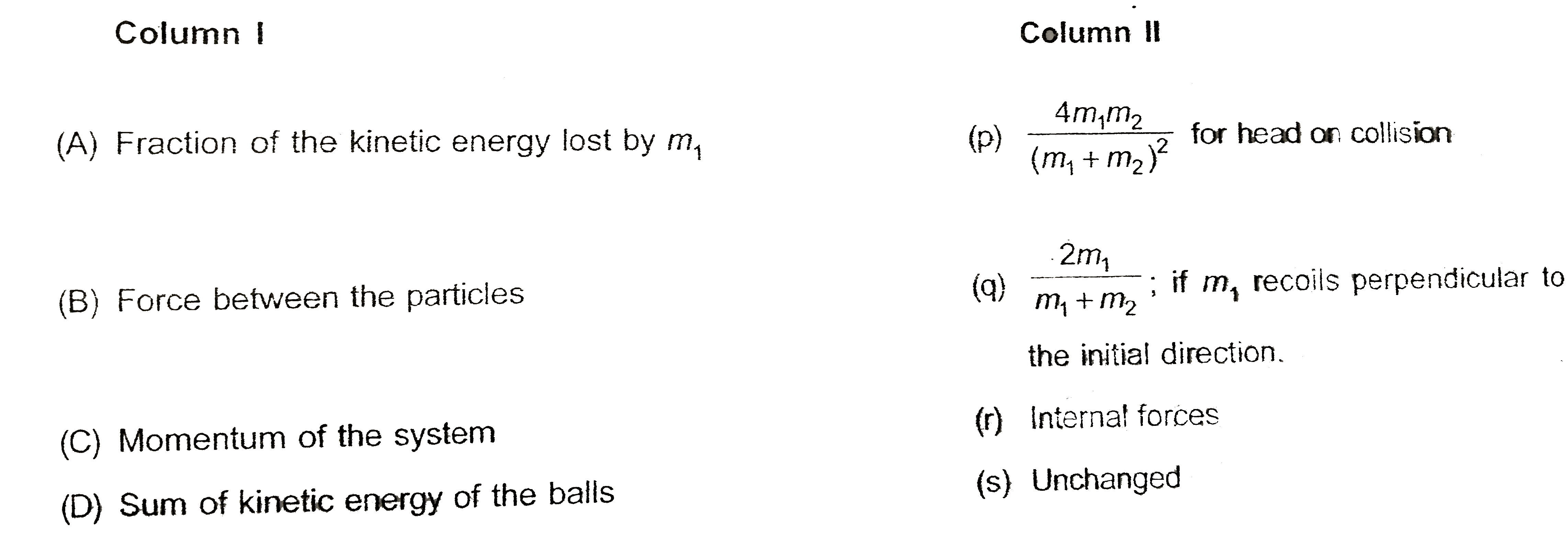Particle 1 experiences a perfectly elastic collision with a stationary particle 2. Determine their mass ratio , if the particles fly symmetrically relative to the initial motion direction particle 1 with angle of divergence θ=60∘.
By the momentum conservation :
x−axis:m1u=m1v1cos30∘+m2v2cos30∘ (i)
y−axis:0=m1v1sin30∘−m2v2sin30∘ (ii)
⇒m1v1=m2v2 in (i)
m1u=m1u=m1v1cos30∘+m1v1cos30∘
=2m1v1cos30∘=√3m1v1
v1=μ√3
v2=m1m2v1=(m1m2)u√3
Since the collision is elastic , Ki=Kf
12m1u2=12m1v21+12m2v22
m1u2=m1(u√3)2+m2×(m1m2)2(u√3)2

Topper's Solved these Questions
Similar Questions
Particle 1 experiences a perfectly collision with a staionary particle 2. Determine their mass ratio , if the particles move perpendicularly to each other.
View SolutionParticle 1 experiences a perfectly elastic collision with a stationary particle 2. Determine their mass ratio, if
(a) after a head-on collision the particles fly apart in the opposite directions with equal velocities,
(b) the particles fly apart symmetrically relative to the initial motion direction of particle I with the angle of divergence θ=60∘.
View Solution
Knowledge Check
Particle A makes a head on elastic collision with another stationary particle B. They fly apart in opposite directions with equal speeds. The mass ratio will be
A13B12C14D23Particle A makes a perfectly elastic collision with another particle B at rest. They fly apart in opposite directions with equal speeds. The ratio of their masses mA/mB is
A12B13C14D1√3A particle (A) of mass m1 elastically collides with another stationary particle (B) of mass m2. Then :
Am1m2=12 and the particles fly a part in the opposite direction with equal velocities.Bm1m2=13 and the particles fly apart in the opposite direction with equal velocities.Cm1m2=21 and the collision angle between the particles is 60∘ symmetrically.Dm1m2=21 and the particles fly apart symmetrically at an angle 90∘
A particle of mass m1 experiences a perfectlly elastic collision with a stationary particle of mass m2. Match the entires in column I to all the entires in column II.

View SolutionA particle of mass m1 experienced a perfectly elastic collision with a stationary particle of mass m2. What fraction of the kinetic energy does the striking particle lose, if
(a) it recoils at right angles to its original motion direction,
(b) the collision is a head-on one?
View SolutionA particle of mass m experienced an elastic collision with a stationary particle of mass 2m . What fraction of the kinetic energy does the striking particle lose if recoils at the right angles to its original motion direction.
View SolutionParticle A makes a perfectly elastic collision with anther particle B at rest. They fly apart in opposite direction with equal speeds. If the masses are mA&mB respectively, then
View SolutionA particle is thrown with a speed u at an angle θ with horizontal. After how much time the velocity of particle will be perpendicular to the initial motion of direction
View Solution
